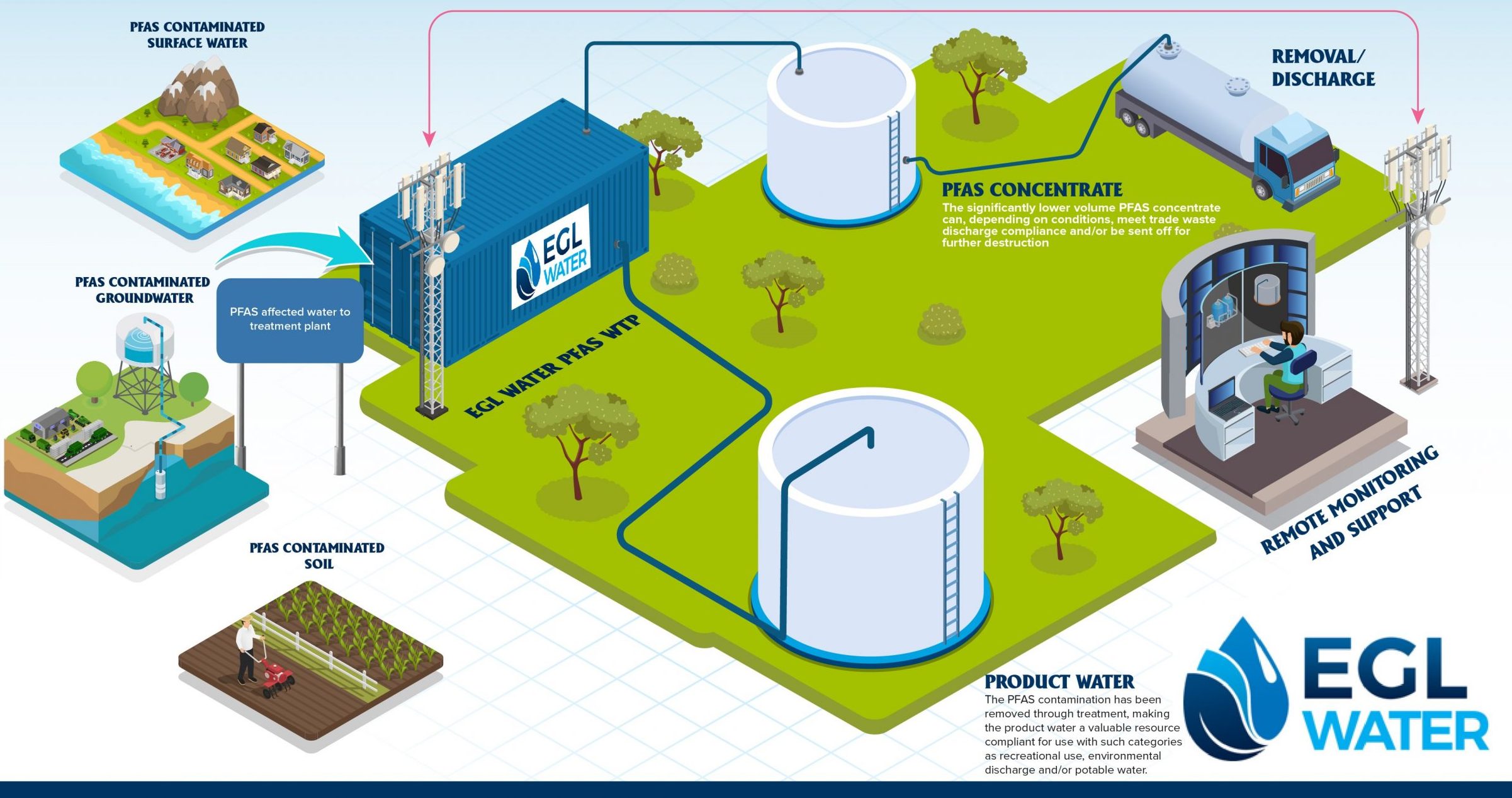Just How PFAS Therapy Ensures Tidy and Sustainable Water
The existence of PFAS, generally known as "permanently chemicals," presents substantial challenges to water quality and public health and wellness. The ramifications of these treatments prolong beyond instant wellness benefits; they raise essential concerns regarding long-lasting water administration strategies that should be dealt with to ensure a resistant future.

Recognizing PFAS Contamination
PFAS, or per- and polyfluoroalkyl materials, have become a considerable environmental issue because of their extensive frequency and perseverance in the environment. These synthetic chemicals have been utilized in various industrial applications and consumer products, including non-stick kitchenware, water resistant garments, and food product packaging, as a result of their one-of-a-kind residential or commercial properties such as water and grease resistance.
The contamination of soil and water sources by PFAS occurs mainly through industrial discharges, firefighting foam usage, and seeping from land fills. pfas management. As soon as launched, these materials are immune to deterioration, causing their build-up in the atmosphere. This determination raises crucial problems, as PFAS can travel cross countries via groundwater and surface area water systems, affecting drinking water products and ecological communities

Wellness Dangers of PFAS
The perseverance of PFAS in the setting elevates substantial wellness concerns for individuals exposed to these substances. Known as "forever chemicals," PFAS do not break down easily and can accumulate in bodies with time. Research has linked PFAS exposure to numerous adverse health effects, including body immune system dysfunction, liver damage, and increased risk of specific cancers - pfas management. Significantly, studies have shown elevated cholesterol degrees and potential effects on reproductive and developmental health, specifically in pregnant people and babies.
The universality of PFAS in consumer items, such as non-stick kitchenware, water-repellent materials, and food product packaging, additional amplifies the threat of direct exposure. Drinking water contaminated with PFAS is a significant problem, as these chemicals can seep into groundwater resources. Prone populations, including youngsters and those living near commercial sites, might encounter increased threats due to their creating systems and potential for greater exposure degrees.
As awareness of these wellness dangers continues to expand, regulatory firms are beginning to develop standards for PFAS levels in alcohol consumption water. Public health efforts are vital to minimize exposure and safeguard neighborhoods from the long-lasting results of these unsafe compounds.

Cutting-edge Treatment Technologies
How can we successfully tackle the challenges presented by PFAS contamination in water resources? Innovative treatment modern technologies are becoming crucial remedies in the pursuit for clean water. These methods concentrate on the removal or devastation of per- and polyfluoroalkyl materials (PFAS), which are infamous for their persistence in the environment.
One appealing strategy is adsorption utilizing sophisticated materials, such as activated carbon and ion exchange materials. These materials have actually shown efficiency in capturing PFAS particles from water. One more notable modern technology is membrane filtering, which makes use of nanofiltration and turn around osmosis to separate pollutants at the molecular degree, hence providing a barrier against PFAS.
Furthermore, progressed oxidation procedures (AOPs) employ strong oxidants to break down PFAS compounds into safe results. This method is particularly efficient for treating highly contaminated water sources. Bioremediation methods, using details microorganisms, are also being explored to deteriorate PFAS.
As research study proceeds, crossbreed systems that incorporate numerous technologies may use boosted performance, attending to the intricacies of PFAS contamination. The development and execution of these cutting-edge therapy technologies are vital steps toward making sure the safety and official statement security and sustainability of our water sources.
Advantages of Effective PFAS Treatment
Effectively dealing with PFAS contamination in water resources significantly enhances public health and environmental safety. PFAS, often referred to as "for life chemicals," are immune to deterioration and can collect in the human body, resulting in serious health threats such as cancer, liver damage, and immune system disorder. By carrying out efficient treatment methods, neighborhoods can decrease exposure to these harmful materials, inevitably enhancing the health and wellness results of their populations.
In addition, effective PFAS treatment contributes to the preservation of regional ecological communities. Infected water can detrimentally influence water life and interrupt the delicate equilibrium of regional environments. By making certain clean water, therapy processes secure biodiversity and keep ecological stability.
In addition, effective PFAS remediation can foster public confidence in water top quality. When communities are assured that their drinking water is without dangerous contaminants, it promotes a sense of security and well-being. This count on is essential for area involvement and support for recurring water administration initiatives.
Future of Water Sustainability
Amidst expanding issues concerning water high quality and deficiency, the future of water sustainability depends upon innovative strategies and collaborative efforts. As communities encounter the looming risks of contaminants like PFAS, the advancement of advanced therapy technologies is crucial. These innovations not only concentrate on the elimination of hazardous materials but likewise advertise the reuse and recycling of water, thereby minimizing overall need.
Moreover, effective water administration plays a crucial role in making sure sustainable practices. Policymakers should incorporate clinical study with regulatory frameworks to develop clear standards for water use and therapy. Stakeholder involvement, consisting of neighborhood neighborhoods and markets, cultivates a feeling of common duty and urges lasting techniques throughout various industries.
Financial investment in framework is also vital; updating aging systems to include modern-day filtration and purification approaches can considerably boost water top quality. Furthermore, welcoming eco-friendly technologies, such as natural purification systems, can supply environment-friendly options.
Inevitably, the future of water sustainability go to this site depends on a holistic technique that combines innovation, policy, and neighborhood participation. By prioritizing these components, we can protect our water sources for generations to come, making sure clean and sustainable water for all.
Verdict
In verdict, the reliable treatment of PFAS is important for making sure tidy and lasting water. Ultimately, robust read PFAS treatment methods add to long-term resilience in water monitoring, cultivating public trust fund in water quality and promoting sustainable practices.